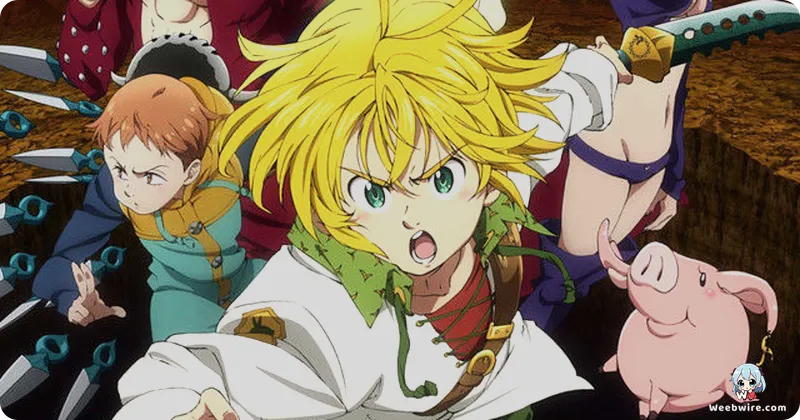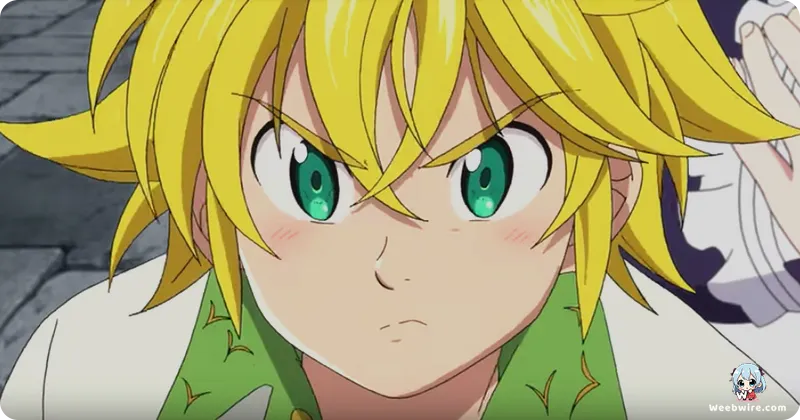Unlocking Britannia's Secrets: A Deep Dive into 'The Seven Deadly Sins: Revival of the Commandments' Lore

The fantastical realm of anime is brimming with epic sagas, compelling protagonists, and intricate magical systems. Yet, few series manage to intertwine these elements with the distinctive allure and surprising depth found within The Seven Deadly Sins: Revival of the Commandments. While often celebrated for its explosive action and gripping narrative, a deeper dive into its second major arc unveils a treasure trove of fascinating insights and lesser-known details that significantly enrich the viewer's journey. This pivotal season, which plunged audiences further into the rich lore of Britannia and introduced the formidable Ten Commandments, delivered not only thrilling confrontations but also subtle nuances and intriguing character revelations that might have eluded the casual observer.
Arthurian Echoes and Legendary Figures
At the heart of the series' allure, particularly highlighted in Revival of the Commandments, is its profound grounding in Arthurian legend. Creator Nakaba Suzuki has masterfully reinterpreted classic figures and concepts, injecting them with a fresh, anime-inspired dynamism. Consider the enigmatic Merlin, the wisest of the Seven Deadly Sins: she's not merely a powerful sorceress but one of the oldest and most knowledgeable beings in existence, her influence spanning millennia. Her intricate connection to King Arthur Pendragon, who begins to unlock his true potential in this very arc, serves as a direct, yet magically unique, homage to their legendary bond.
Similarly, characters such as Ban, blessed with an unkillable body, echo mythical immortal figures, while Escanor, the Lion Sin of Pride, embodies a duality reminiscent of classic heroes with concealed strengths. His power, waxing and waning with the sun, presents a truly unique and visually spectacular ability, making his daily transformation a central pillar of his character. This dramatic shift from a timid, polite persona at night to an overwhelmingly arrogant and potent figure by day is among the most striking and entertaining transformations in the entire series. Far from being a mere spectacle, this Jekyll-and-Hyde dynamic is intimately tied to his divine grace, Sunshine, and the constant internal struggle to rein in such colossal power.

The Enigmatic Ten Commandments
The very concept of the Ten Commandments themselves draws compelling parallels to ancient divine decrees and moral codes. Each member possesses a distinct curse or ability that springs to life when a specific rule is violated in their presence. For instance, Fraudrin's Commandment of Piety chillingly compels anyone who turns their back on him to become his loyal servant, a power that forces characters to confront their deepest convictions. Zeldris, the formidable leader of the Ten Commandments and Meliodas's younger brother, wields the Commandment of Piety, which, when broken, subjugates those who flee or show him disrespect, making them utterly subservient to the Demon King. This complex system of curses injects a strategic layer into battles, compelling the Sins to not only overcome immense strength but also navigate treacherous ethical quandaries.
Meliodas's Unveiling Past
The protagonist, Meliodas, sees his true identity and ancient past gradually revealed in Revival of the Commandments. He is unveiled as the Demon King's eldest son and a former leader of the Ten Commandments himself. A lesser-known detail is that the demon mark on his forehead signifies more than just power; it's a direct manifestation of his demonic heritage and the slow reawakening of his terrifying true strength. His seemingly carefree and often lewd demeanor is a carefully constructed facade, a coping mechanism for the immense burden of his curse, which forces him to endure Elizabeth's cyclical death and reincarnation over thousands of years. This profound tragic cycle serves as a core emotional anchor, lending immense depth to his unwavering devotion.
Hawk's Surprising Role
Even seemingly minor characters hold surprising depths. Hawk, the eloquent pig, often perceived as mere comic relief, occasionally exhibits peculiar abilities and an uncanny wisdom, hinting at a far greater, perhaps even divine, role in the grand narrative. His unique ability to consume demon remnants, ostensibly for sustenance, is a subtle yet intriguing detail that has fueled numerous fan theories regarding his true origins.
Animation Excellence and Tonal Balance
A-1 Pictures, the acclaimed animation studio behind hits like Sword Art Online and Fairy Tail, masterfully tackled the challenge of translating Nakaba Suzuki's dynamic art style and intense battle sequences to the screen. Revival of the Commandments showcases their prowess, particularly in depicting the sheer magnitude of the Commandments' powers and the Sins' lightning-fast movements. Visual effects for abilities such as Escanor's Sunshine and Meliodas's Full Counter were meticulously rendered to convey their devastating impact, often utilizing intricate interplay of light and shadow.
The series' enduring appeal also stems from its masterful balance of lighthearted humor with genuinely dark and emotionally resonant moments. The witty banter among the Sins, frequently spearheaded by Meliodas's mischievous antics, offers crucial respite from the grim stakes of their conflicts. This tonal agility is a hallmark of the series, broadening its appeal to a diverse audience.
The Seven Deadly Sins: Revival of the Commandments stands as a powerful testament to imaginative world-building and profound character development. Beyond its immediate excitement, it offers a rich tapestry of interwoven mythologies, complex motivations, and subtle narrative choices that generously reward the attentive viewer. These deeper insights into its construction only heighten appreciation for an anime that continues to enthrall audiences with its unique blend of epic fantasy and heartfelt storytelling.
Credits
The Seven Deadly Sins: Revival of the Commandments
Author
Nakaba Suzuki
Cover Art
Nakaba Suzuki
Studio
A-1 Pictures
Publisher
Kodansha
Producers





